


The Knagenhjelm family (also spelled Knagenhielm in Denmark, often romanised Knagenhelm ) is a Danish and Norwegian noble family originating in Norway. [1]



The Knagenhjelm family (also spelled Knagenhielm in Denmark, often romanised Knagenhelm ) is a Danish and Norwegian noble family originating in Norway. [1]
The family descends from Niels Tygesen Knag (1661–1737) (later Niels Tygesen Knagenhielm), who was an attorney and lagmann of the Bergen appeals court. He grew in wealth and owned the estates of Kaupanger (Kaupanger Hovedgård) and Stedje (Storgarden Stedje) in Sogndal and an estate on Losna (Losna-ætta). Niels Tygesen Knag was the son of district magistrate Tyge Nielssøn Castberg (ca. 1610–1687) from Kalø in Jutland and Maren Nielsdatter Knag, the daughter of Niels Knag, district magistrate on Sunnmøre. The current Norwegian family Castberg also descends from this couple. [2] [3] [4] [5]
The surname Knagenhielm was granted when on 21 December 1721, Niels Tygesen Knag was ennobled by King Christian VI. He married twice, first in 1695 with Abel Margrethe Hansdatter (1676-1701), daughter of customs official Hans Clausen and Ingeborg Lem, and in 1702 Veronica Elisabeth Hiort (d. 1713), daughter of Hans Christoffersen Hiorth (d. 1692), Nordenfjells country commissioner. He had descent through his first marriage including his grandson, Joachim de Knagenhielm (1727-1796) who served as County Governor of Nordre Bergenhus (1763-1771) and of Nordland (1771-1789). Knagenhielm descendants still own Kaupanger Manor (Kaupanger Hovedgård) in Sogn og Fjordane and are included in the Yearbook of the Danish Nobility (Danmarks Adels Aarbog). [6] [7] [8] [9]
Before he became noble, Niels Tygesen Knag had only a tree trunk as his arms (Hans Krag. 1942). The coat of arms was received upon the ennoblement in 1721. Description without the heraldic terminology: On a blue shield a tilted, chopped and knotty silver tree trunk beside or above which there are three golden stars in each of two bends. On the helmet is a six-pointed star between two buffalo horns divided in gold and blue, vice versa, respectively. Some family members use also an oak leaf on the tree trunk.
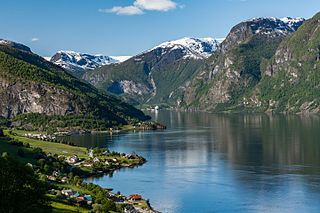
Sogn og Fjordane was a county in western Norway, up to 1 January 2020 when it was merged to become part of Vestland county. Bordering previous counties Møre og Romsdal, Oppland, Buskerud, and Hordaland, the county administration was in the village of Hermansverk in Leikanger municipality. The largest town in the county was Førde.

Solund is a municipality in the county of Vestland, Norway. It is located in the traditional district of Sogn. Solund is the westernmost island municipality in Norway. Holmebåen on the island of Steinsøy is the westernmost point in all of Norway. Most residents of Solund live on the main islands of Sula and Ytre Sula. The administrative centre of Solund is the village of Hardbakke on Sula island. Some other villages in Solund include Kolgrov on Ytre Sula, Hersvikbygda on Sula, and Losnegard on Losna.

Sogndal is a municipality in Vestland county, Norway. It is located on the northern shore of the Sognefjorden in the traditional district of Sogn. The village of Hermansverk is the administrative center of Sogndal municipality. Other villages include Kaupanger, Kjørnes, Fimreite, Nornes, and Fjærland. Sogndal Airport, Haukåsen is located 10 kilometres (6.2 mi) southwest of Kaupanger.
The aristocracy of Norway is the modern and medieval aristocracy in Norway. Additionally, there have been economical, political, and military elites that—relating to the main lines of Norway's history—are generally accepted as nominal predecessors of the aforementioned. Since the 16th century, modern aristocracy is known as nobility.
Jan Henrik Nitter Hansen (1801–1879) was a Norwegian businessman and politician.

Nicolai Niels Nielsen was a Norwegian priest and politician.

Lars Johannes Irgens was a Norwegian jurist and public official. He served as a representative at the Norwegian Constitutional Assembly.
Ragnar Leif Ulstein MM was a Norwegian journalist, writer and resistance member. He wrote several documentary books from the Second World War, including surveys of the SOE group Norwegian Independent Company 1, volunteers sailing from Norway to Scotland, refugee traffic from Norway to Sweden, and military intelligence in Norway.

Frederik Krag was a Danish nobleman (Baron) and senior civil servant who served kings Frederick IV and Frederick V. He was the Governor-General of Norway, from 1713 until 1722. He is not fondly remembered in Norway due to his attempts to subordinate the farmers there in a similar level of service to that which was common in Denmark of the period.
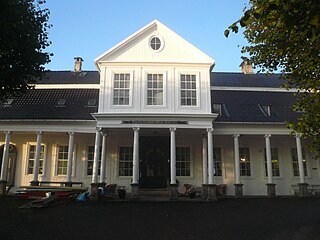
Thomas Erichsens Minde is a landmark estate and Manor house located on the isle of Askøy in Vestland, Norway.
Niels Johannesen Loftesnæs was a Norwegian farmer and soldier. He served as a representative at the Norwegian Constitutional Assembly.

The Von Munthe af Morgenstierne family is a Danish and a Norwegian noble family living in Norway and The Netherlands. It descends from Bredo Munthe of Bekkeskov, who on 19 December 1755 was ennobled under the name von Munthe af Morgenstierne. The family is included in the Yearbook of the Danish Nobility.
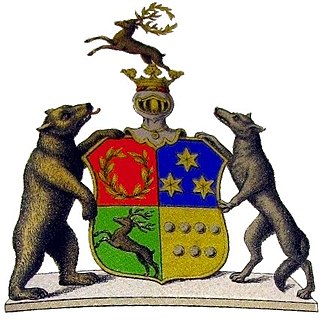
The Gyldenkrantz family was a Danish and Norwegian noble family of Dutch origin. The family became patrilineally extinct after some generations.
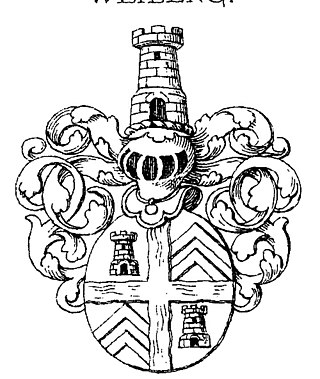
The Werenskiold family, also spelled Werenschiold, Wærenskiold, Werenskjold etcetera, is a Danish and Norwegian noble family living in Norway.
Niels Tygesøn Knagenhielm was a Norwegian civil servant, land owner and merchant. He is also known for his descriptions from Northern Norway.

Iver Erikssøn Leganger was a Norwegian priest and author.
Hans Hansen Lilienskiold was a Norwegian jurist, government official, civil servant, and land owner. He was a member of the Lilienskiold noble family and served as County Governor of Finnmark. He is particularly remembered as an author for his works on the topography and culture of Finnmark.
Ingerd Erlendsdotter was a Norwegian noblewoman and landowner during the 15th century.
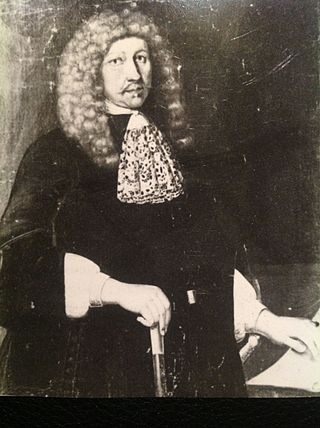
Preben von Ahnen was a Norwegian civil servant and landowner.

Melchior Michaelsen Falch was a Norwegian jurist and magistrate in the municipality of Sogndal in Sogn og Fjordane, Norway. He was interested in promoting fisheries, and in 1775 he received an award for a work on Norwegian fisheries.